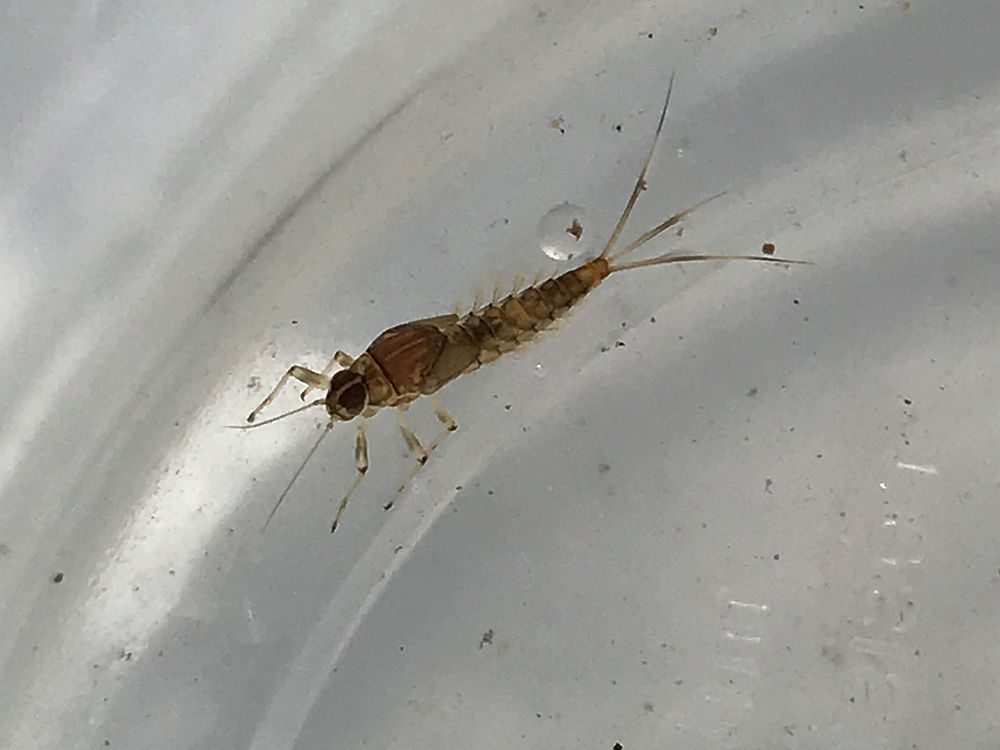Flying insects underwater : caddisflies, stoneflies, mayflies, midges and other flies, water beetles and dragonflies.
Different building material

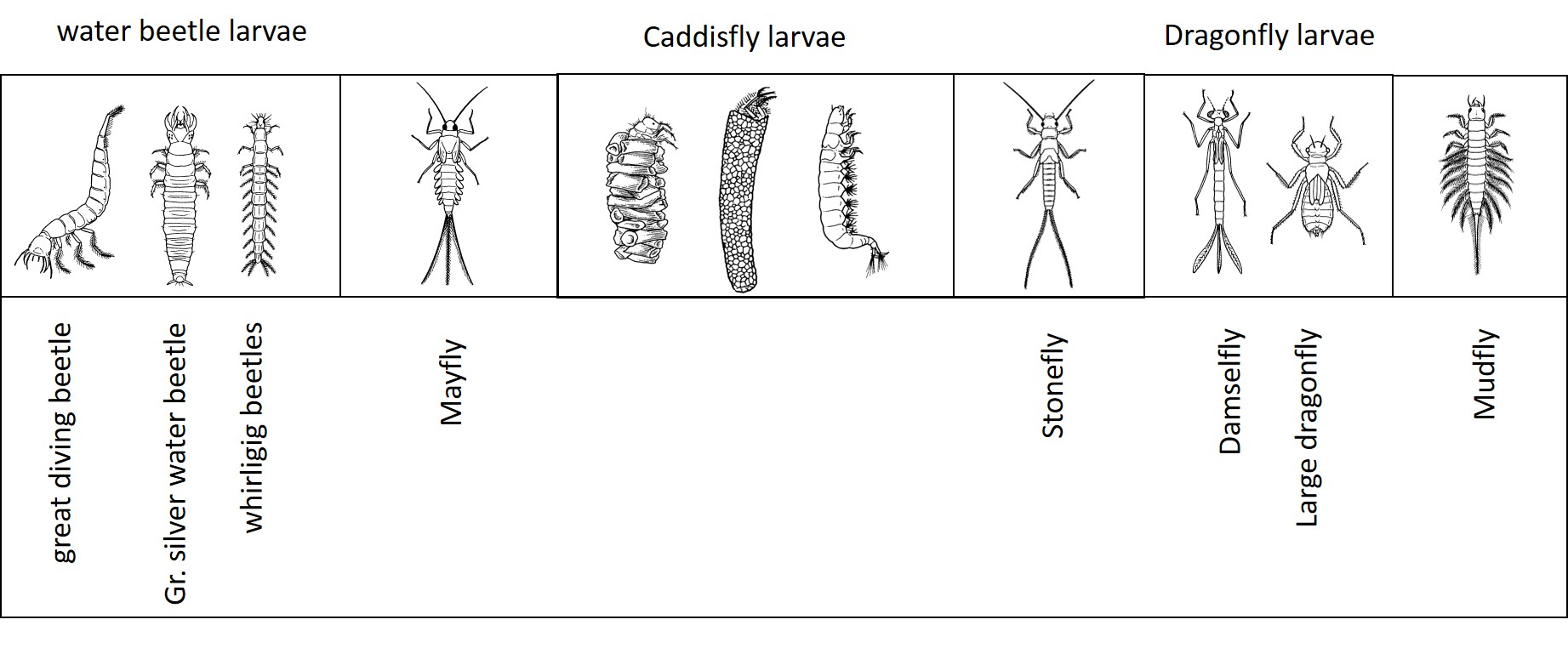
Chart for an overview of insect larvae living underwater
CADDISFLIES (TRICHOPTERA)
The caddisfly larvae are of great importance for a water body. They can be divided into two groups. The caddisless larvae and the caddis-bearing larvae. The quiver-bearing larvae build their caddis from their own produced spider silk and incorporate various materials from their habitat into it. The material is extremely diverse and can be constructed from grains of sand, sticks, shells, spruce needles, or pieces of leaves. It serves to protect the larvae and is their home that they constantly carry around. The caddis is always expanded by the growing larva. In fast flowing streams heavy material is often used such as stones or sand. Caddisless larvae usually live in waters with enough current to keep their (tracheal) gills well supplied with oxygen. They look caterpillar-like and spin a kind of funnel into the current, in which microorganisms, algae or dead plant material collects which serves as food for them. Some caddisless larvae are also active hunters. Caddisfly larvae are only able to survive in clean or slightly polluted waters. They can often be found in groups under stones.
The adult caddisflies are unimpressive, gray-brown flying insects that hide during the day in moss and deadwood or under leaves of plants near the shore. Towards evening they dance in swarms at the water's edge and are then often mistaken for mosquitoes or moths. Unlike moths, however, they carry their antennae long and pointing forward.

A accumulation of caddisflies under a stone of a stream in Rhineland-Palatinate, Germany

Photo from GLOBE Swiss
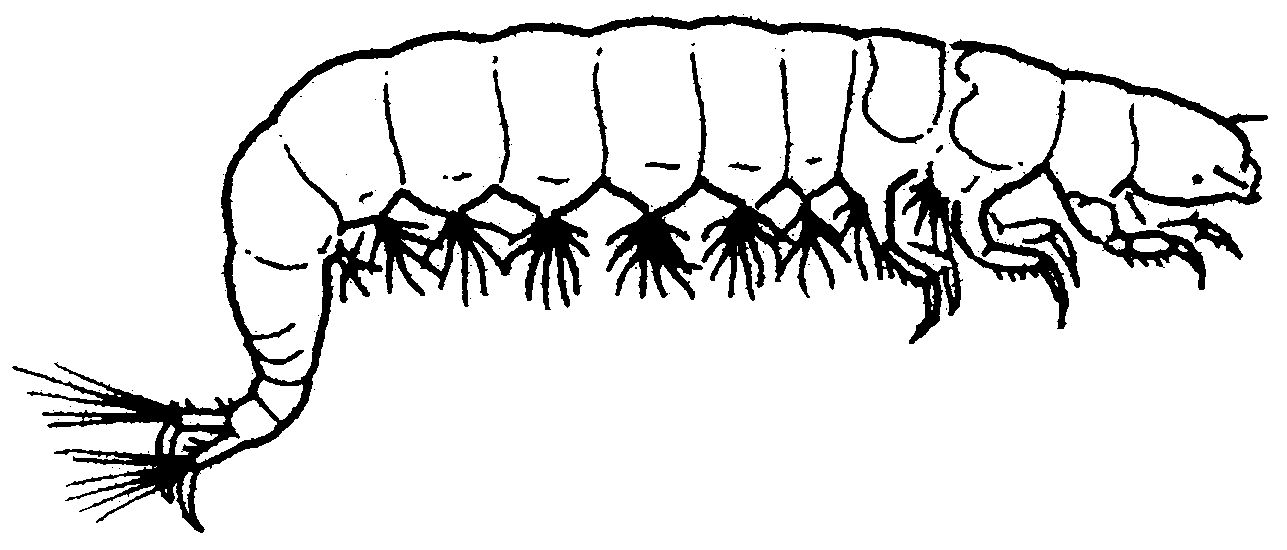
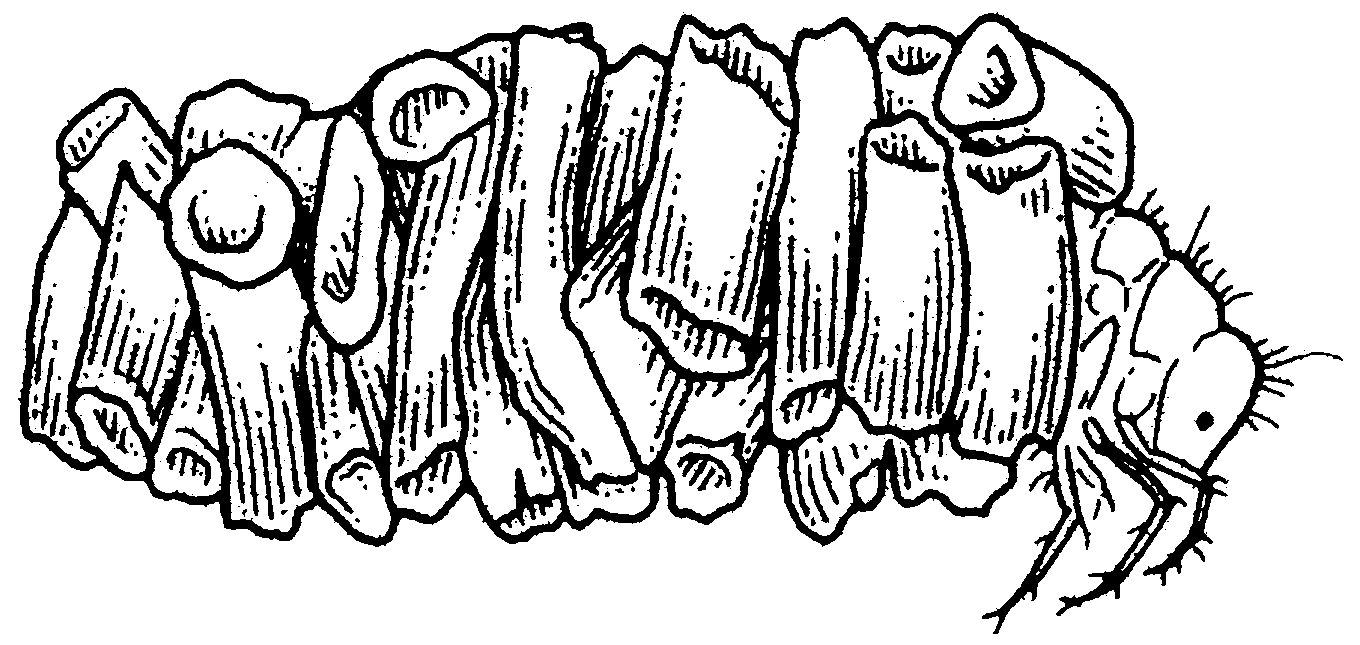
Example of a caddisless larva and a caddis-bearing larva.
Drawings from Kosmos Publishing House

An adult caddisfly, it is usually grayish brown in color and inconspicuous.
Drawing from Kosmos Publishing House

Their coloring reminds of small moths
"Caddisfly (Trichoptera sp.)" by acryptozoo is licensed under CC BY 2.0.
MAYFLIES (EPHEMEROPTERA)

The two developmental stages of the mayfly. On the left the larva, recognizable by the 3 long body appendages, the gill leaves are on the side of the body. On the right the imago recognizable also by the 3 long appendages and the straight erect pairs of wings in the resting state.
The mayflies have nothing to do with the real flies. The larvae live in the water and are clearly recognizable by their 3 long (difference to stoneflies!), thread-like body appendages. In flowing waters they usually burrow into the mud of the water bottom and actively filter the water for food (detritus). In still waters, swimming mayfly larvae also occur. They can be observed sitting on leaves of aquatic plants, where they also find the algal cover as food. They are often yellow with brown markings and are found in clear oxygen-rich waters. The larvae are often only 8 to 23 mm long. Sometimes their skin is found on surrounding shore plants. This is because before their last molt, the larvae usually climb ashore. There, a preliminary stage of the adult mayflies (subimago) hatches within a minute. The mayflies are the only species that then complete another molt (imago). The adult mayflies live only a few hours or usually two to three days, depending on the species. During this time they are looking for a mating partner and do not eat anything.

A mayfly larva of the Heptageniidae family, It can be found in rivers and streams of the Gutland and also in lower reaches of the Sûre and Moselle rivers.
"Mayfly nymph of the family Heptageniidae" by Dr 'B ' is licensed under CC BY-NC-SA 2.0.
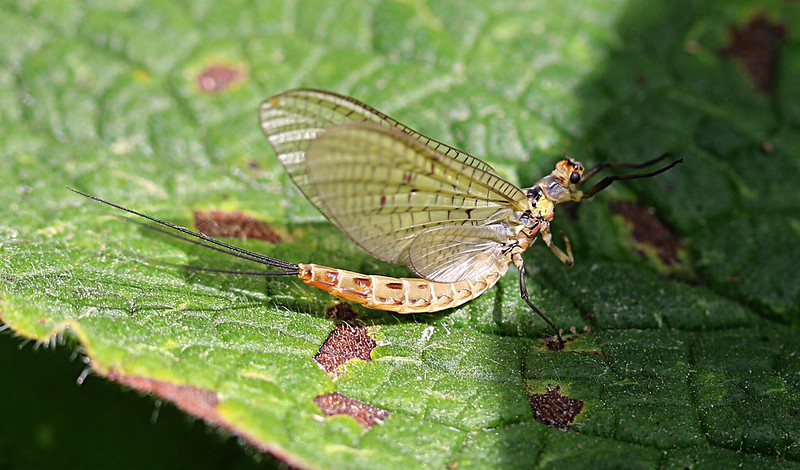
This is the adult mayfly of the species Ephemera danica, its larvae are burrowing and occur in some streams of the colline stage of the Gutland.
"ephemera danica may fly" by Nick Goodrum Photography is licensed under CC BY 2.0.
STONEFLIES (PLECOPTERA)


On the left is a stonefly larva and on the right is the adult stonefly, they can be clearly identified by the filamentous appendages on the abdomen, of which they have only 2. Also, the adult stoneflies fold their wings over their back. They are not erect as in mayflies.
Larvae of stoneflies belong to the typical inhabitants of flowing waters. A high number of species indicates good water quality. They resemble the larvae of mayflies, but have a clear distinguishing feature: they always have only 2 filamentous appendages on the abdomen. They live in springs, fast flowing streams and rivers and depend on the high oxygen content of the water. In addition, they prefer streams that are cold even in summer. They are extremely sensitive to pollution and are therefore good bioindicators of unpolluted waters. They are shy of light and usually stay in low flow areas such as between larger stones or hidden in aquatic plants.
There are three sizes of stoneflies. The small species feed on algae, the medium ones eat small animals and detritus and the large species prey on other small invertebrates. The 2 long antennae are the organs of touch and taste.
The adults are usually dark brown, black or greenish-yellow in color. They live only a few weeks, essentially staying hidden in semi-darkness and looking for mating partners in moss cushions, under leaves or on furrows of tree bark. They are not good flyers and prefer to crawl away when disturbed.

"Perlodid stonefly, Isoperla sp." by henricksrobert is licensed under CC BY-SA 2.0.

"File:Perlidae - Isoperla carbonaria.jpg" by Hectonichus is licensed under CC BY-SA 3.0.
Larva and imago of the genus Isoperla, they are found in streams at medium altitudes in the Ösling and Gutland. The larvae are yellowish with brown-black pattern, which is very individual that means differs from larva to larva. The imagos are also greenish-yellow.
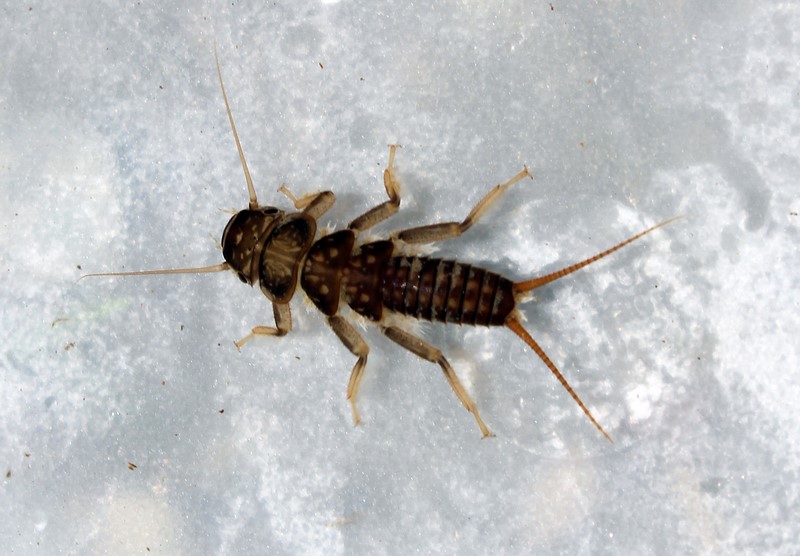
Stonefly larvae can be clearly identified by their TWO filamentous appendages on the abdomen.
Photo from GLOBE Swiss
MOSQUITOES AND TRUE FLIES (DIPTERA)
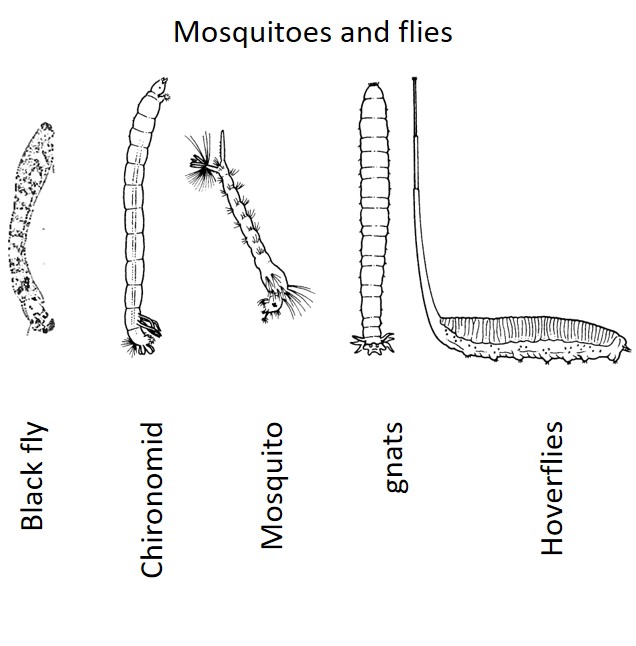
Most mosquito and fly larvae as in the illustration above can survive well in nutrient-rich waters, but not species of the blackfly larva (Simuliidae) Illustration and photo below. It is an exception because it helps purify the water with its fan-like bristles with which it filters food from the water. It is only half an inch in size and difficult to spot. It crawls along water plants like a caterpillar and attaches itself to leaves with its adhesive disc. It can be found only in flowing waters, it lives in oxygen-rich streams and rivers of the Ösling and Gutland. Eggs are laid in running water, and the larvae attach themselves to rocks. Breeding success is highly sensitive to water pollution
 Blackfly larvae are up to 15mm long, it lives in running waters and attaches itself to stones and plants with its adhesive foot at the rear end. It moves forward like a caterpillar. The comb-shaped fan serves the larva to filter and eat small material from the water. Such as algae cells or detritus.
Blackfly larvae are up to 15mm long, it lives in running waters and attaches itself to stones and plants with its adhesive foot at the rear end. It moves forward like a caterpillar. The comb-shaped fan serves the larva to filter and eat small material from the water. Such as algae cells or detritus.
The fan is always turned against the direction of the current.
Mosquitoes (Culicidae)
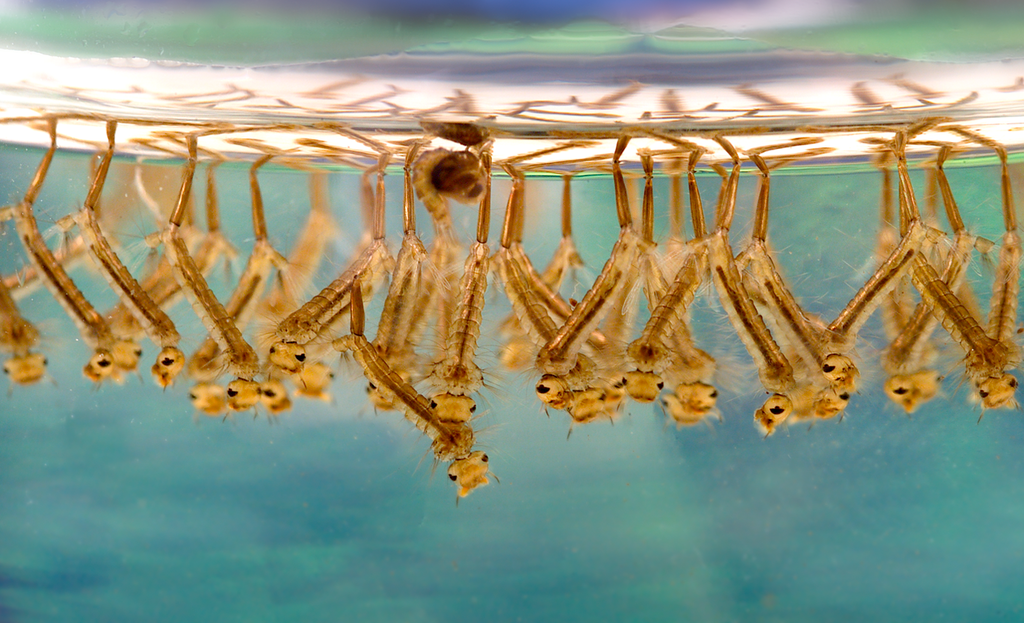
"Culex sp larvae" by (Image: James Gathany, CDC) is licensed under CC BY 2.5.
A group of mosquito larvae in the center you can see a pupa of a larva, soon the adult mosquito will hatch from it.
Mosquitoes have no demands on their water bodies and colonize any still water, including small bodies of water such as puddles or rain barrels. They hang upside down under the surface of the water and scour the water for food particles. Their breathing tube is in contact with the water surface. Mosquito larvae are usually white or yellowish, about 10mm long and have a rather large head with 2 eyes. The larva of the invasive tiger mosquito also looks like this and can hardly be distinguished from the native species. The larvae pupate before the adult mosquito hatches from them, at this stage the mosquito pupa looks different again.
The female adult mosquitoes are bloodsuckers because they need the blood to mature their eggs. The males, on the other hand, feed on flower nectar and dance in swarms on the shore.
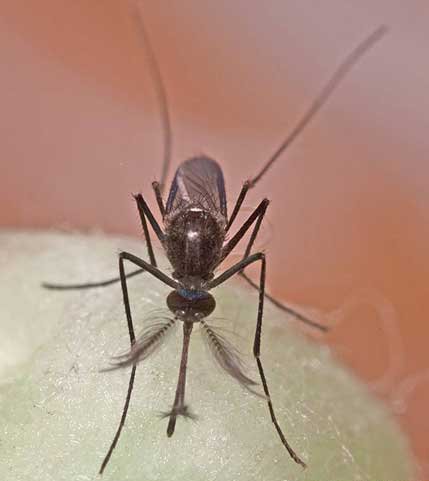
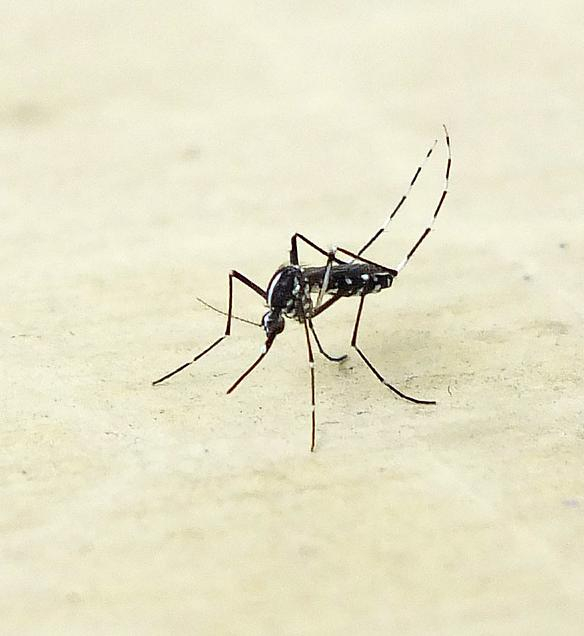
Mosquito of the family Culex (left) and the invasive species tiger mosquito (Aedes albopictus) (right).
"Culex tarsalis" by Esteban Armijo is licensed under CC BY 2.0.
"Aedes albopictus (Asian Tiger Mosquito)" by Mosquito Addict is licensed under CC BY-NC 2.0.
Chironomids (Chironomidae)
Chironomids (nonbiting midges or lake flies) larvae also have an elongated worm-like shape and can be different colors. They live differently some live freely in the water and are up to 2 cm in size and white, yellowish, green or brown-gray. Andre larvae live in the mud and are light to dark red. They do not need a breathing tube, as they absorb oxygen from the water through their skin. The red forms in particular can still survive in eutrophic waters with little oxygen, as their red pigment helps them still draw residual oxygen from the water. The adult mosquitoes do not bite, even though they look very similar to mosquitoes.
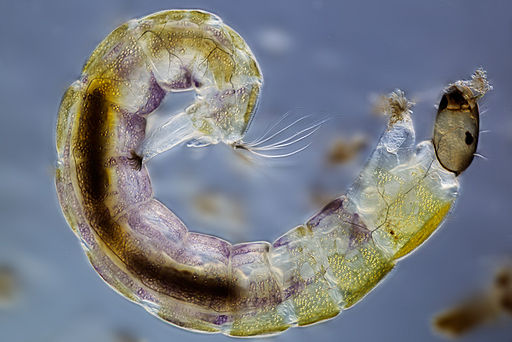
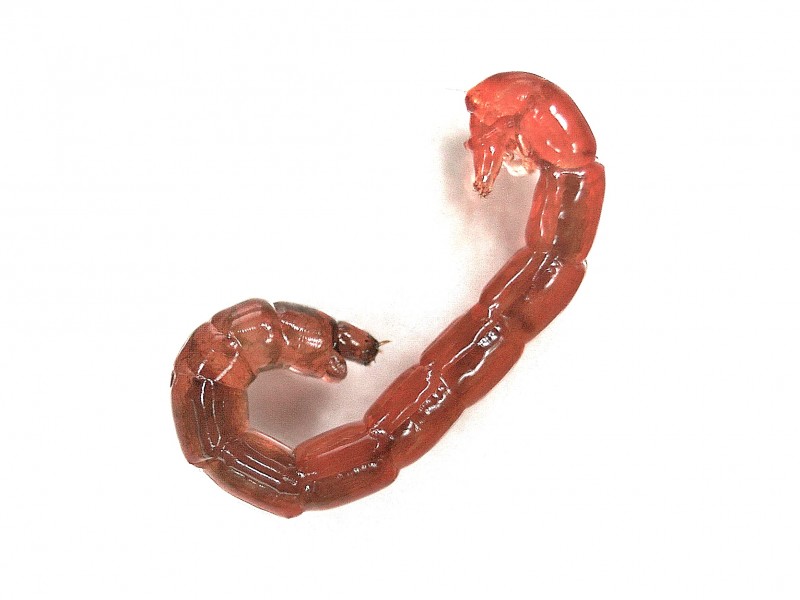
Two color forms of chironomid larvae right the redder one
"File:Mikrofoto.de-Zuckmueckenlarve3.jpg" by Frank Fox is licensed under CC BY-SA 3.0.
"File:Chironomus spec. (Chironomidae) - (larva), Elst (Gld), the Netherlands.jpg"
by This image is created by user B. Schoenmakers at waarneming.nl, a source of nature
observations in the Netherlands. is licensed under CC BY 3.0.
Hover flies (Syrphidae)
Larvae of hover flies live in nutrient-rich, stagnant or slow-flowing waters. They also tolerate heavy pollution and are also found in very small bodies of water such as septic tanks, sewage ponds or brackish water puddles. Such as the larvae of the common drone fly (Eristalis tenax), also called "rat-tailed maggot", which is actually the long breathing tube of the larvae. They live in the mud or sometimes float on the water surface and are relatively large at 10-25 mm. The adult hoverfly is a flower visitor.
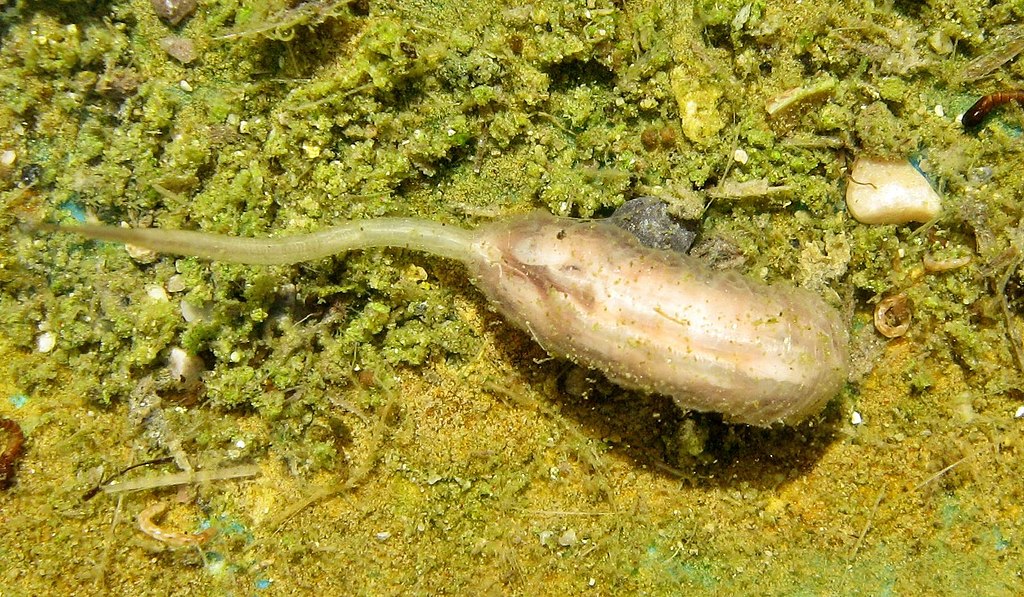
The larva of Eristalis tenax, also called rat tail larva.
"File:Langegg Rattenschwanzlarve Eristalini.jpg" by LoKiLeCh is licensed
under CC BY-SA 3.0.
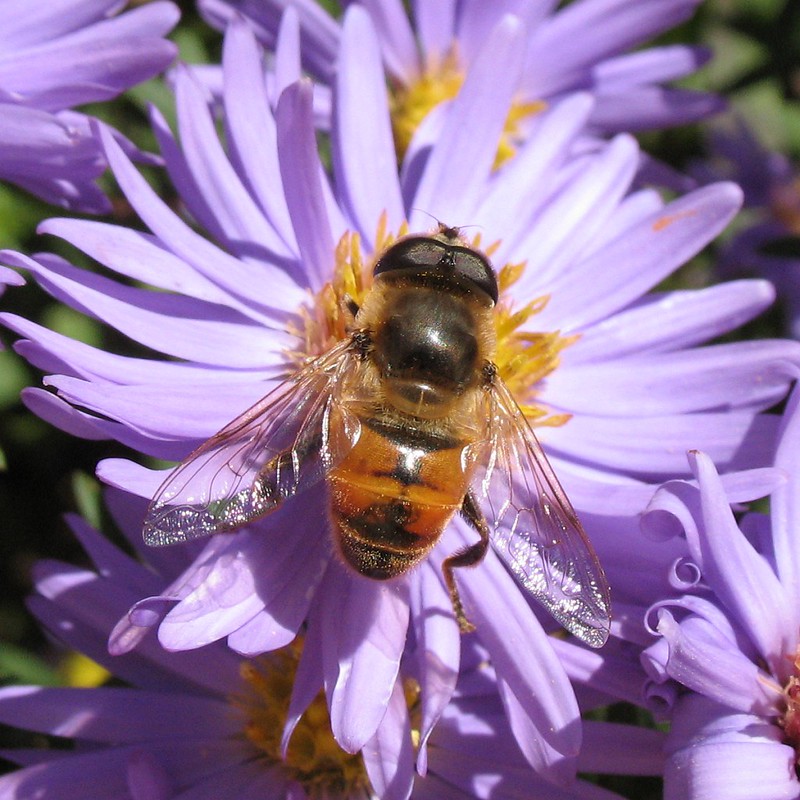
The adult hoverfly Eristalis tenax.
"Eristalis tenax" by Gilles Gonthier is licensed under CC BY 2.0
BEETLE (COLEOPTERA)

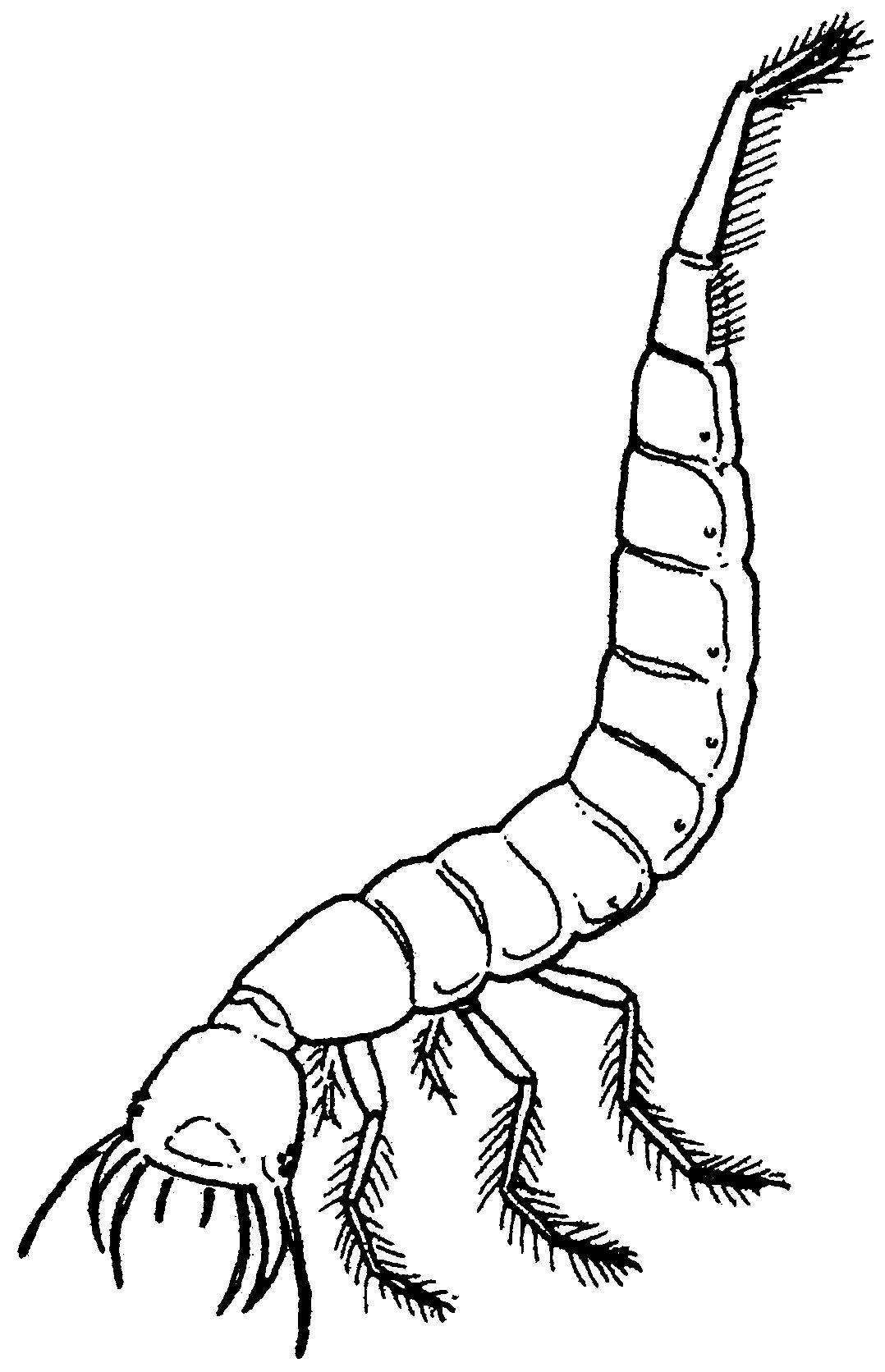


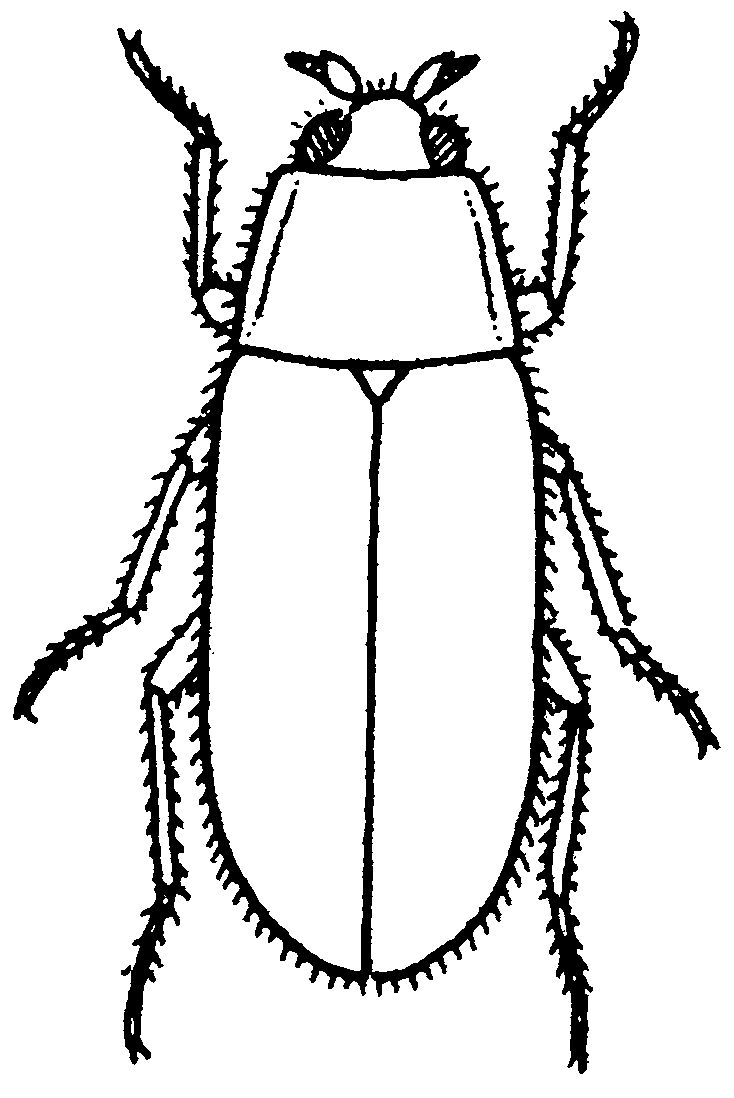

Most beetle species whose larvae and beetles live in water belong to the groups of water beetles (Dytiscidae) or true water beetles (Hydrophilidae). The forms of the beetle larvae are very diverse, which is why it is often not possible to identify them immediately as beetle larvae (see schematic illustration above). Larvae of the water beetles and the beetles themselves are both predatory and feed on other small aquatic animals, species of the water beetle group also feed on algae and aquatic plants. Water beetles are usually very small and rarely grow over 1 cm in size. Exceptions are the conspicuous animals living in lakes and ponds, such as the great diving beetle Dytiscus marginalis, the broad-edged beetle Dytiscus latissimus or the great silver water beetle Hydrophilus piceus.

One of the largest beetles in our waters: Yellow blister beetle Dytiscus marginalis.
"File:Gelbrandkäfer (Dytiscus marginalis).jpg" by Holger Gröschl is licensed under CC BY-SA 2.0.
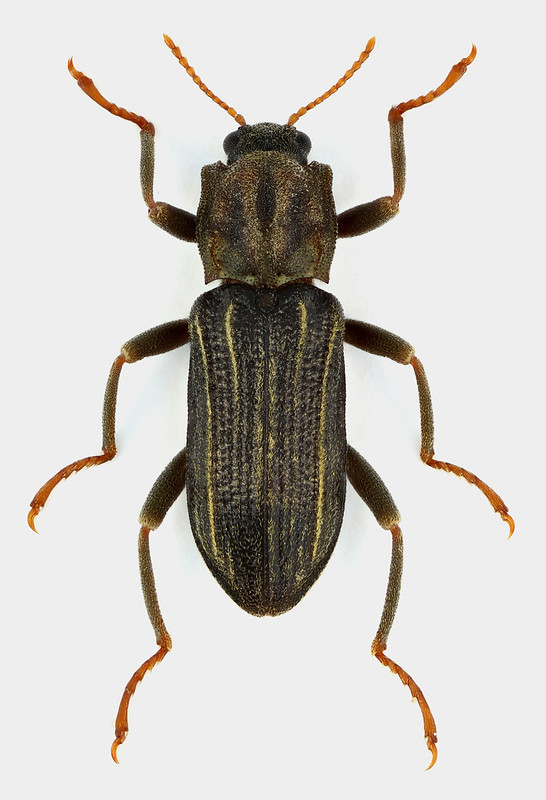
Stenelmis canaliculata a hooked beetle, it is also found in the lower reaches of the Sûre and Moselle rivers. It is only 4-5mm in size.
"Stenelmis canaliculata (Gyllenhal, 1808)" by christoffer.fagerstrom is licensed under CC BY-NC 2.0.
Species of hooked beetles (Elmidae) are most common in Luxembourg waters. They need a lot of dissolved oxygen in the water for their complex underwater respiratory supply. Thus, they prefer cold, flowing, oxygen-rich water and are thus found in streams or lakes with a lot of water movement. All cleanliness characteristics for bodies of water. They use their hooks on the ends of their legs to claw at aquatic plants, stones or leaves. They are tiny, with a body size of up to 2.5mm, and even their larvae, which look similar to a brown elongated isopod, are only a bit larger (3-4 mm). Therefore, they are not so easy to spot. The beetles and the larvae eat dead plant material and algae from e.g. stones. Hooked beetles are not swimmers, they walk slowly underwater.
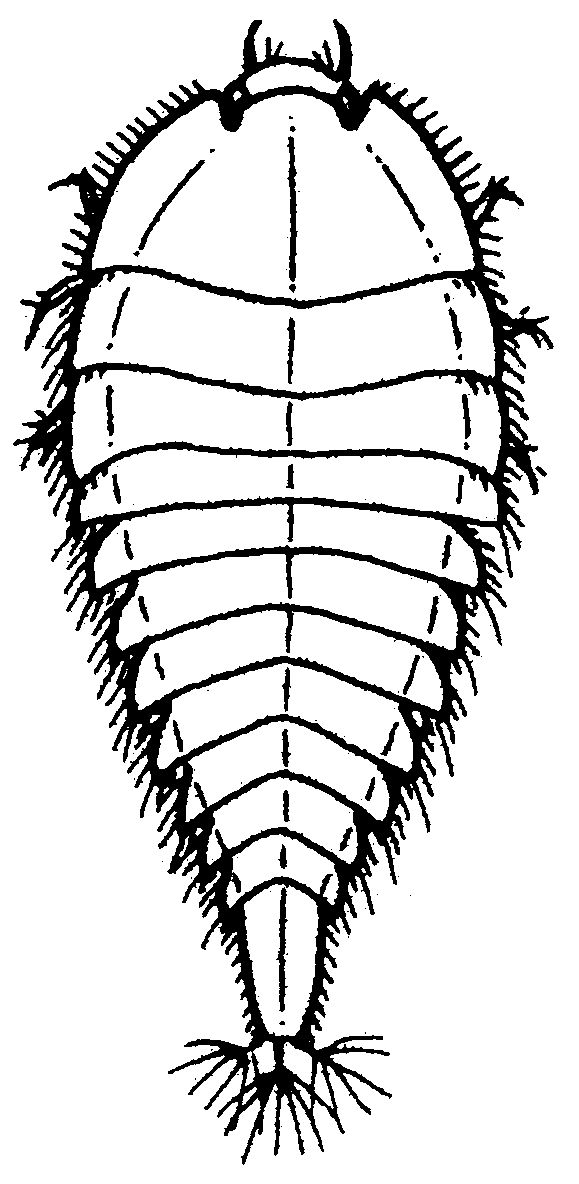
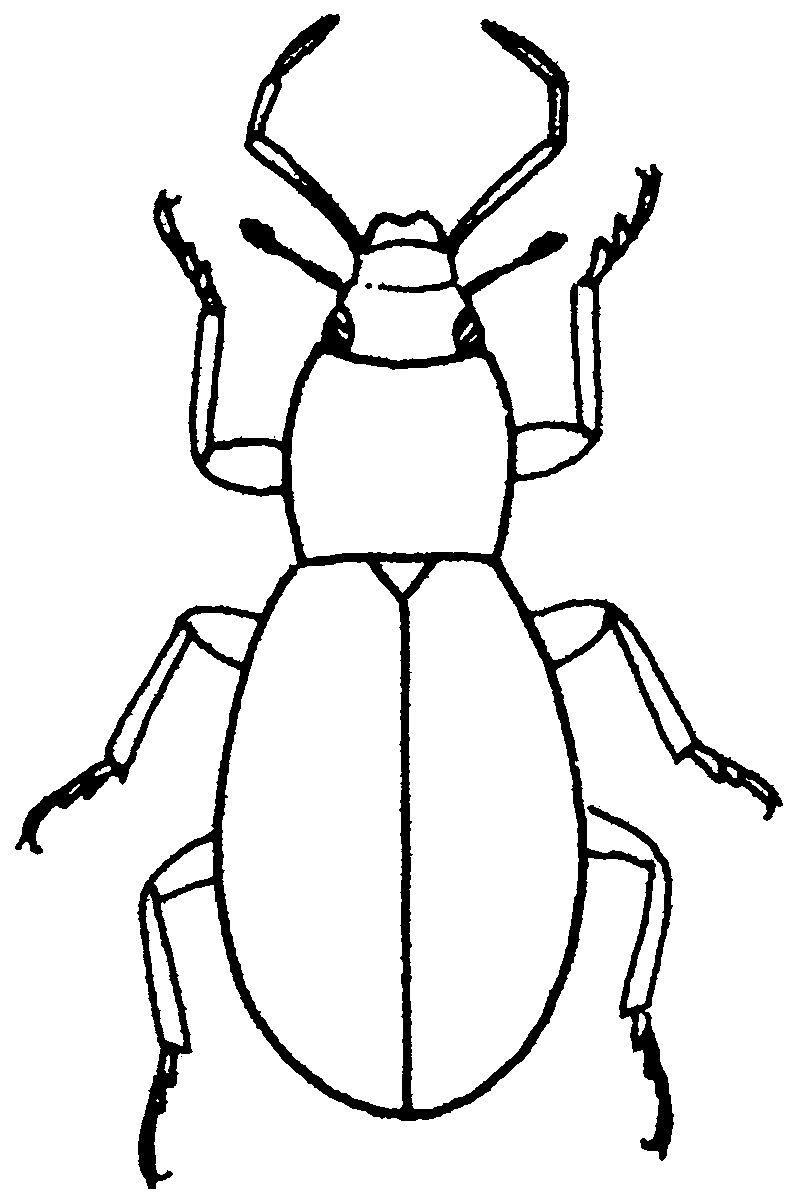
The isopod-like shape of a hooked beetle larva
and a beetle of the family Hydraenidae, of which the species
the species Hydraena pulchella also occurs in larger rivers of the Oesling.
Marked as other animal?
BUGS: Semiaquatic bugs (Gerromorpha) and water bugs (Nepomorpha)
Bugs can also look so similar to beetles, you can distinguish them by some features:
- Bugs have sucking proboscis, beetles have biting and chewing tools.
- You can't see wings in beetles, they are mostly hidden under the carapace. In bugs you can see their wings, which they have folded over their back.
- Most species of bugs are predators, feeding on any insect that overpowers them. They sit on aquatic plants, in mud, or on old leaves where they lie in wait for food. Even small fish and tadpoles are eaten.


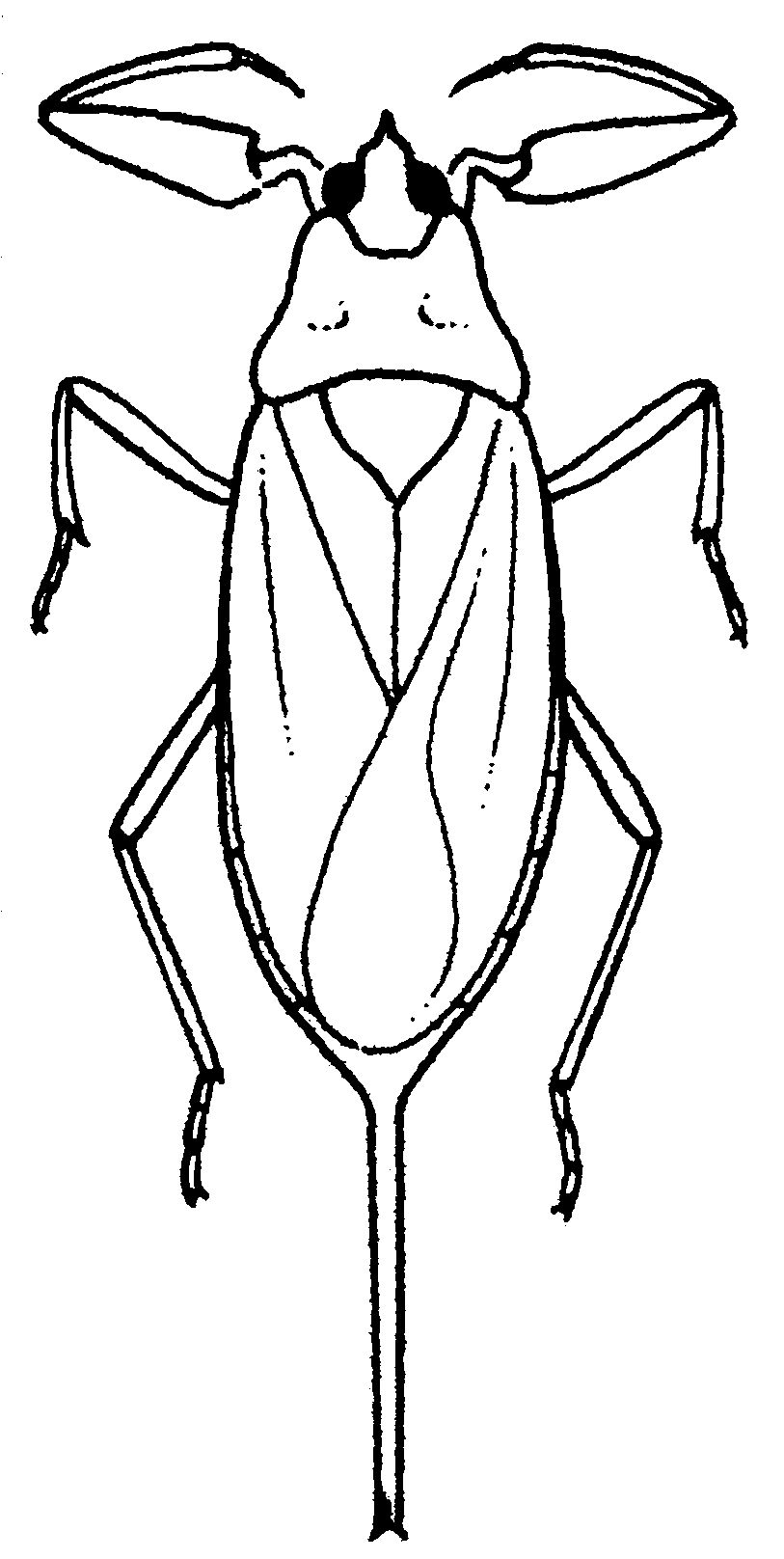

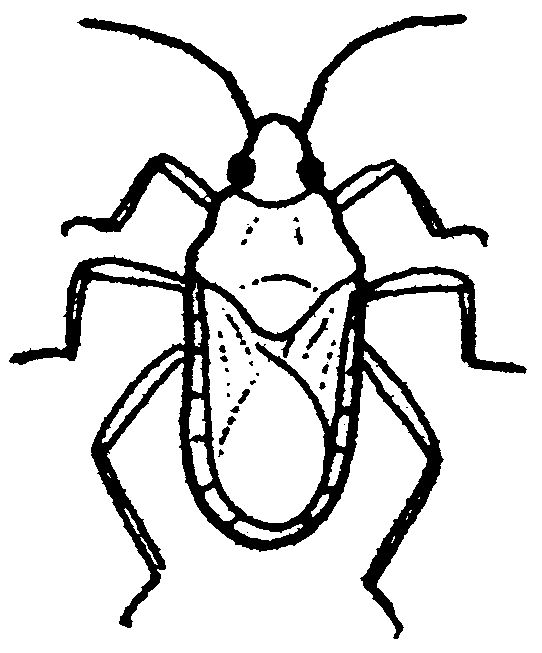

Especially with the water scorpion (third from left in the picture) one could think it would be a beetle, water striders also belong to the bugs. The backswimmer (rightmost picture) has the characteristic to swim with the belly upwards just below the water surface. So it lies on its back.
DRAGONFLIES (ODONATA)

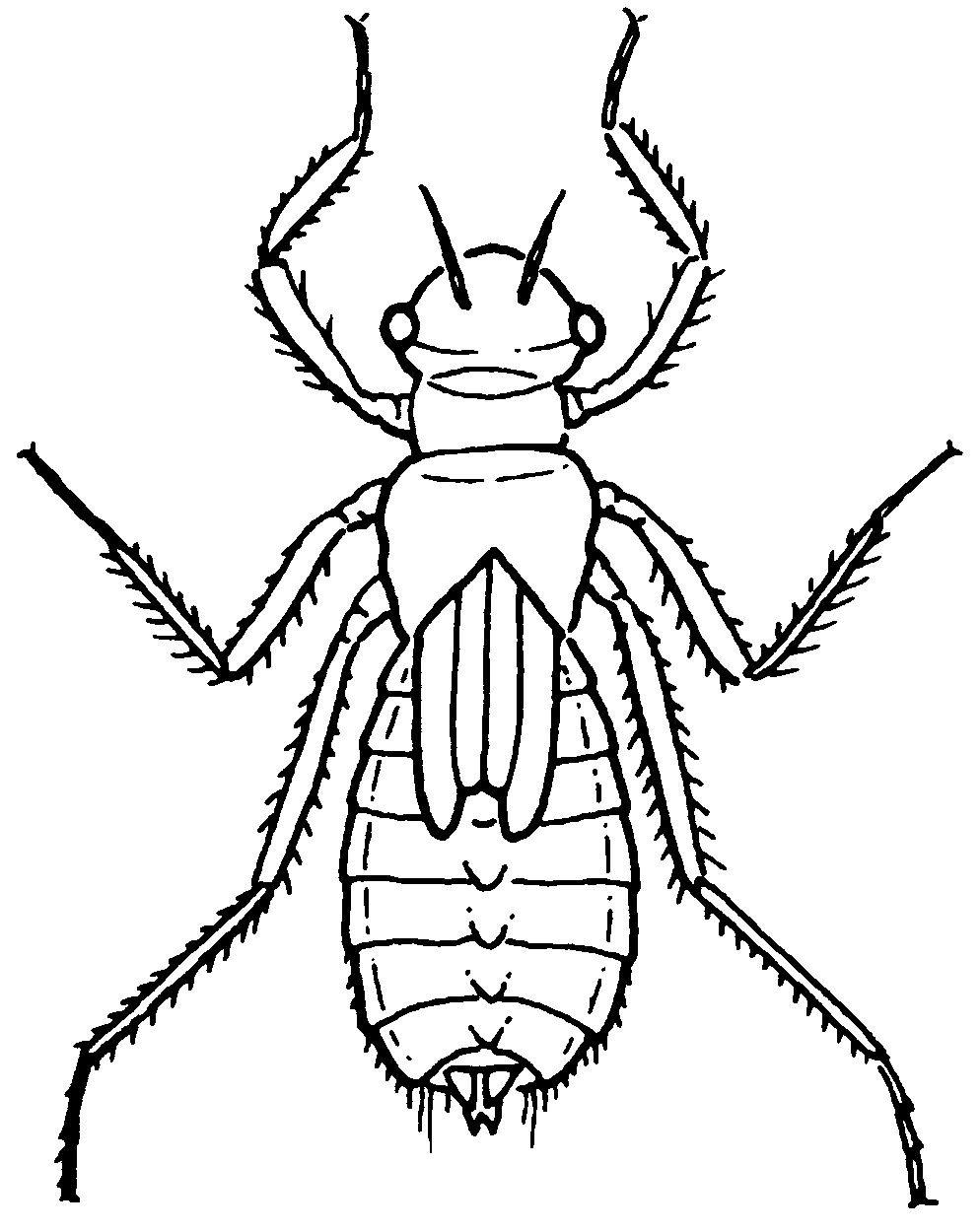
There are 2 major groups of dragonflies, the damselflies (left) and the true dragonflies (right). All larvae live in water but look different. The larvae of the damselflies have 3 leaf-like appendages on the abdomen, these are their gill leaves. Damselflies are slender and elongated in shape and usually have a brown-yellow to gray coloration. The larvae of the true dragonflies do not have tail gill leaves, their gills are hidden in the abdomen. They have more of an oval shaped body and also have a "catching mask" on their head that allows them to dart forward to grab their prey.
All dragonfly larvae are hunters and lurk among plants or almost completely hidden in the mud for other aquatic insects, worms or even tadpoles. Before its final molt to adult dragonfly (imago), the larva climbs out of the water and clings to riparian plants. At the back, its skin bursts open and a soft, pale dragonfly squeezes out. From hatching to the first flight of the dragonfly usually takes several hours, the skin (exuvia) remains on the plants and can be discovered by nature observers.
The development of the White-legged damselfly (Platycnemis pennipes) and the Beautiful demoiselle (Calopteryx virgo) is more likely in clean waters with sufficient plant growth and structure. Natural river courses with many marginal areas, with aquatic and riparian plants are optimal for dragonflies. One can only speak of indirect bioindicators for good or near-natural water quality. The Beautiful demoiselle can be found in some river courses of the Ösling, it prefers still or slow-flowing waters. Most of the flying dragonflies can be observed between mid-May and mid-September.
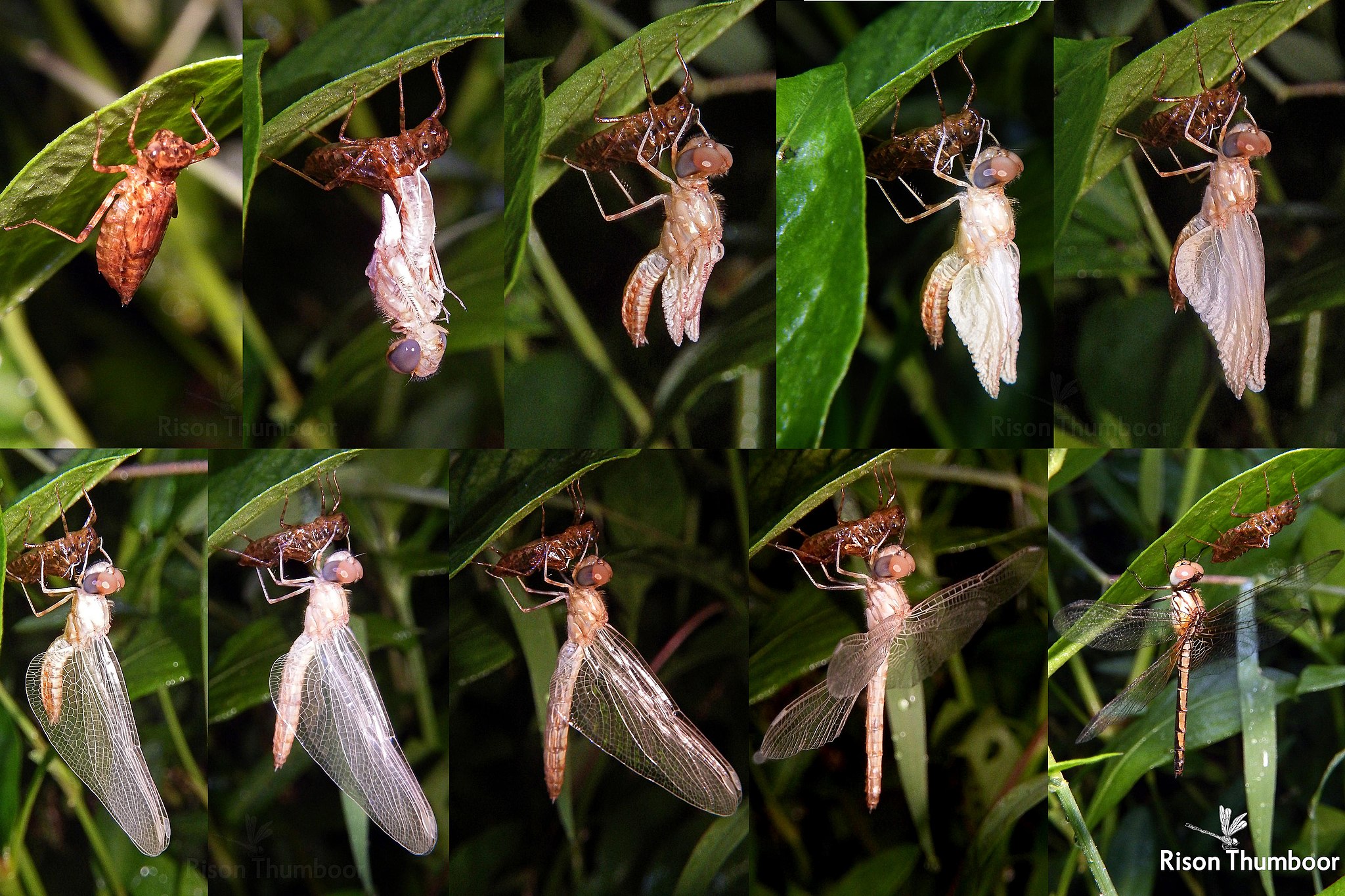
The larva of a large dragonfly has climbed up a leaf and clung to it. In the following hours, the initially soft-skinned adult dragonfly hatches. Its body stretches and its exoskeleton hardens and the dragonfly larva's skin remains on the leaf.
"Emergence of a Dragonfly" by Rison Thumboor is licensed under CC BY-SA 4.0.
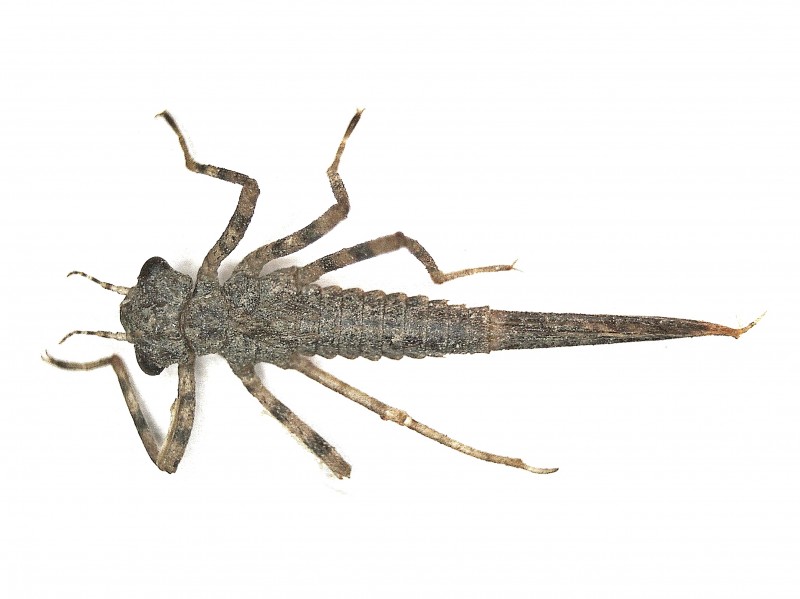

Left: Larva of a damselfly, the White-legged damselfly (Platycnemis pennipes), since the larva also hides in the bottom of the water body, they are often covered with mud when they crawl on land and appear grayer than underwater.
Right: A male of the White-legged damselfly
"File:Platycnemis pennipes (Platycnemididae) (Blue Featherleg) - (larva - nymph), Elst (Gld), the Netherlands - 2.jpg" by B. Schoenmakersat waarneming.nl is licensed under CC BY 3.0.
"Federlibelle (m)" by vobebis is marked with CC0 1.0.
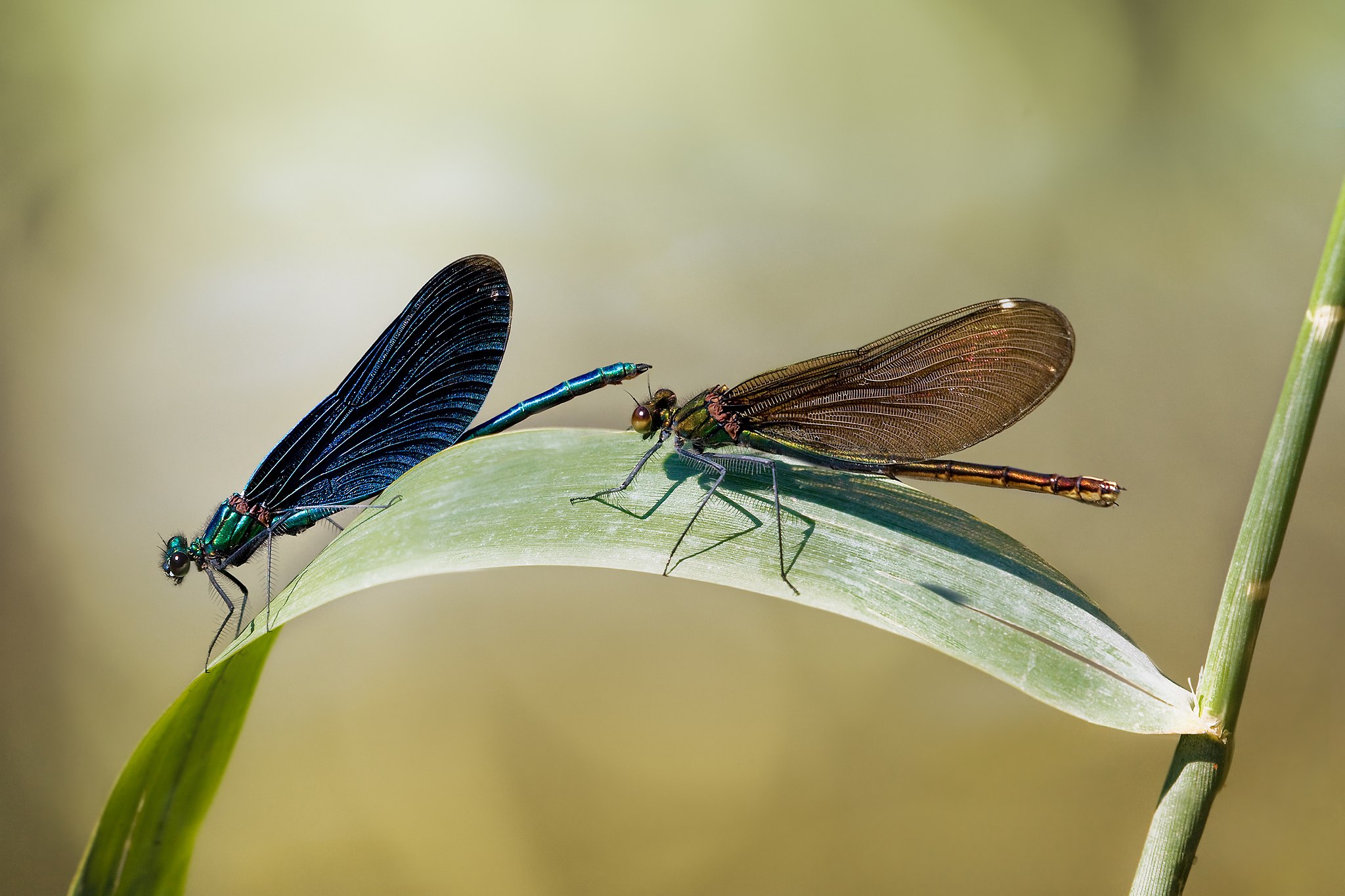
Here are two imagos of the Beautiful demoiselle (Calopteryx virgo), on the left the male, on the right the female. The blue-winged damselfly can be found in and along some river courses of the Oesling, the Beautiful demoiselle prefers still or slow-flowing waters with many plants.
"File:Beautiful Demoiselle Calopteryx virgo male female.jpg" by Richard Bartz is licensed under CC BY-SA 2.5.

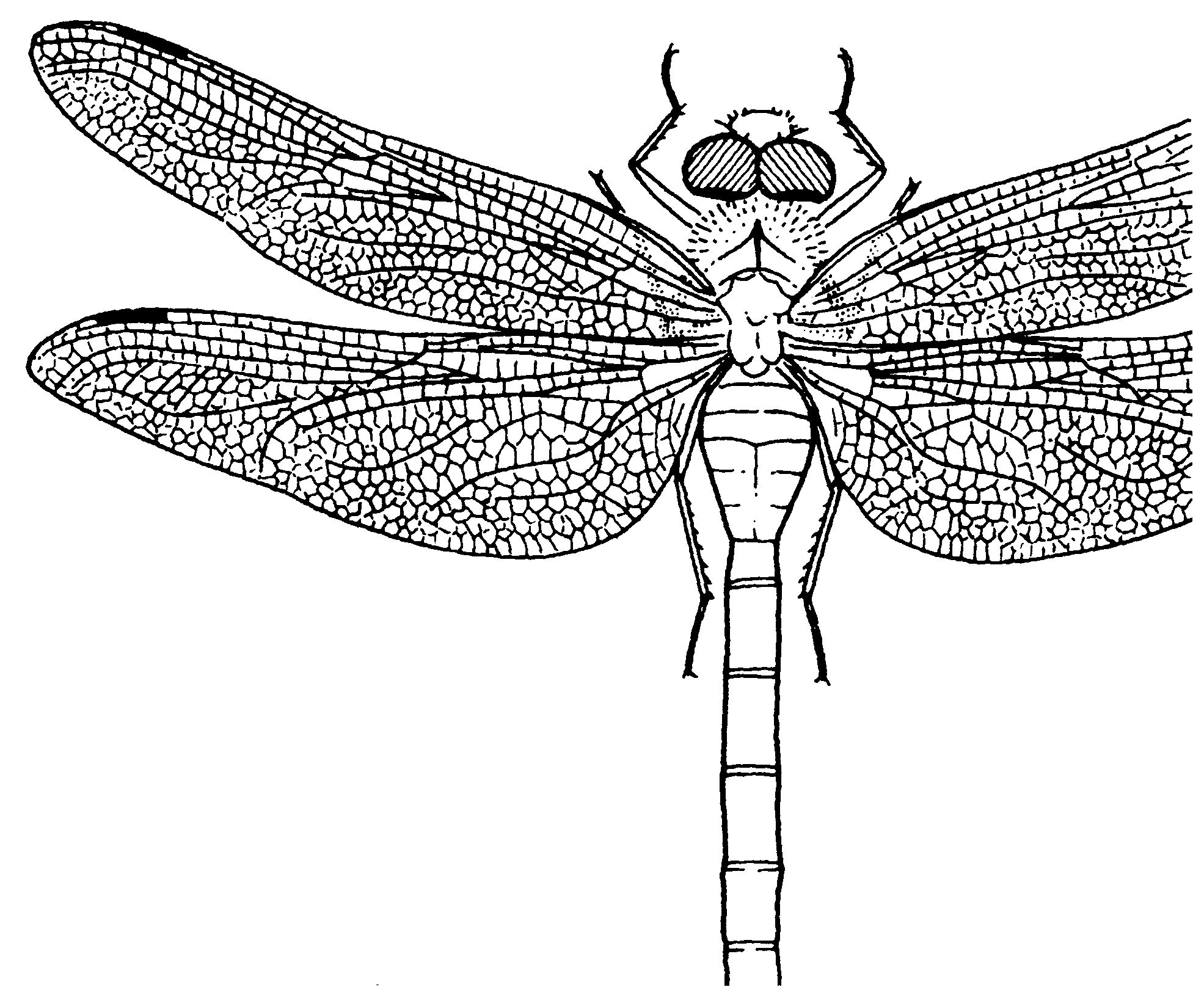
Typical shape of a larva and an imago of the group of true dragonflies (top)


Typical shape of a larva and an imago of the group of damselflies (below).
Drawings from Kosmos Publishing House
Different building material
Caddisflies in still waters more often use comparatively light building materials such as stalks or pieces of leaves from aquatic plants.Larvae of the family Limnephilidae are found in waters of the colline stage in the Gutland.

Foto:"Caddis fly larva" by Dr 'B ' is licensed under CC BY-NC-SA 2.0.

This website uses no external trackers, no analytics, just session cookies and values your online privacy.

